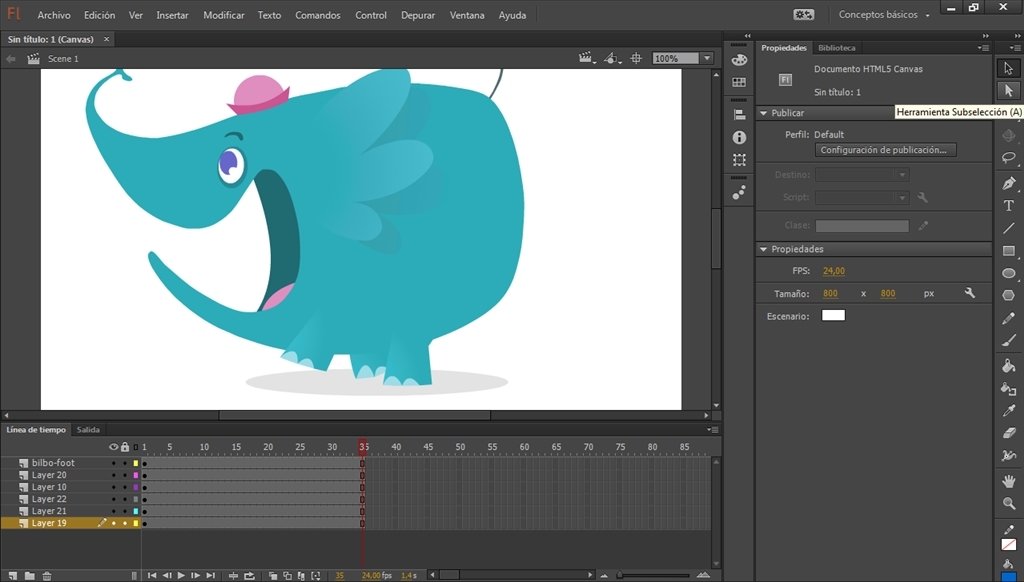# <center>"Do Instructional Designers (IDs) ought to know the way to code? Whilst investigating this query, I came across this gem on Cristy Tucker’s blog."</center>
<center><br/><br/>[Image Source](https://i1.wp.com/webuilddesign.com/wp-content/uploads/2015/04/designer-or-coder.jpg?w=837&ssl=1)</center>
Do Instructional Designers (IDs) ought to know the way to code? Whilst investigating this query, I came across this gem on Cristy Tucker’s blog. She managed an excellent task considering abilities indexed in work descriptions for instructional designers. According to Cristy’s discoveries, listed below are the most notable applications or expertise you require effectiveness straight into success being an ID:
## 1. Microsoft Office
<center><br/><br/>[Image Source](https://static.techspot.com/images2/news/bigimage/2017/09/2017-09-26-image-21.jpg)</center>
## 2. Adobe Flash
<center><br/><br/>[Image Source](http://imag.malavida.com/mvimgbig/download-fs/adobe-flash-4392-1.jpg)</center>
## 3. Adobe Captivate
<center><br/><br/>[Image Source](http://captaincaptivate.com/img/captain_captivate_goodbye.png)</center>
## 4. Multimedia
<center><br/><br/>[Image Source](http://www.alldesignsolution.com.my/wp-content/uploads/2017/03/Graphic-Designer-Multimedia-Designer-Internship-KL-Malaysia-All-Design-Solution.jpg)</center>
## 5. Adobe Dreamweaver
<center>/dreamweaver-cc-56a9f4ff3df78cf772abc0de.jpg)<br/><br/>[Image Source](https://fthmb.tqn.com/1i9M4nMecLZFtnuzaZGqRFasxew=/768x0/filters:no_upscale()/dreamweaver-cc-56a9f4ff3df78cf772abc0de.jpg)</center>
Runners-ups were actually Photoshop, Web Conferencing, and HTML.
Well, needless to say, the year was 2007. In the past, we had IDs performing the assessment and layout area of the task, then passing across the storyboard towards the programmers. Computer programmers have been the awesome individuals, generating miracle that occurs in Flash. Developers would frequently demand “approved” content material well before they could commence coding in Flash’s ActionScript.
An ATD survey from 2015 implies that IDs continue to think about smooth abilities as their concern (instead of programming or coding). But, among the top dilemmas IDs allegedly deal with is the inadequate time to build content, 37% of these are convinced that IDs tend to be the final kinds to learn of modifications in the group affecting their tasks. The final types to find out! This got me pondering how our self-reported concerns are in-line with all the basic company needs.
In the book, Engage with the WORL&D! we check out six characteristics (critical thinking, CREAM, adaptive resilience, human-centered design, societal influence, and belief debunking) that can help instructional developers shift from content material wrangling to difficulty solving by growing the borders of the things instructional design is.
The borders involving instructional designers and programmers tend to be more fluid these days. Some IDs build materials making use of fast authoring resources, as well as code directly in HTML5. Other people continue to center on the assessment and layout realm (probably analysis) only. Connie Malamed gathered some present ID abilities, developing in her earlier blog site on the subject.
In today’s community, although it is not required to realize how to code, it will present you a benefit within the area to stand out. Forbes publication lists eight jobs that are simpler to get whenever you can code. I will give you speculating the other seven, but one of those is an instructional designer.
# Thinking Like A Programmer
<center><br/><br/>[Image Source](http://www.troiska.org/img/no-starch-tlap-02.png)</center>
Figuring out a number of programming languages (BASIC, C, PHP, Java, and JavaScript), I have to concur, the capability to code opens up a lot more doors and widens the horizon of remedies you may create. However, my suggestion will not be to discover ways to code except if you are into that factor. You will end up discouraged if you are not much of the coder-kind.
Nevertheless, I really like to believe that there is a change in between coding and programming, and that is the message I am wishing you are taking from this post: as you behave like a designer, you think just like a programmer.
The text programming and coding are mainly utilized interchangeably. Coding is choosing a language, and conveying these concepts that existed within the brain formerly, now in lines of program code. Programming, on the flip side, is the method of identifying these concepts, to begin with.
When coding is about composing lines of program code, programming features a larger meaning. You are able to program a software, a washing machine, or perhaps a video game engine without the need of composing just one line of code. With artificial intelligence-driven coding may well be a fundamental literacy ability in the foreseeable future. In my opinion, programming is all about the reasoning. This is basically the state of mind, how you will approach issues, the layout pattern you are implementing. Pondering just like a programmer is a great way to shift from content wrangling to issue fixes.
# Practical Takeaways From Programming
<center><br/><br/>[Image Source](http://symmetrypublicrelations.com/wp-content/uploads/2015/04/38c1b5d.jpg)</center>
Let us take a look at the six facets of contemplating just like a computer programmer, and the way they can help you designing far better learning experiences:
# 1. There are no “next slides” and “next buttons” in programming.
<center><br/><br/>[Image Source](http://pasa-matbaa.com/wp-content/uploads/2015/04/WhatsNEXT.jpg)</center>
Coding is both holistic and job-level contemplating: You take care of each and every task being a system. Systems contemplating calls for one to both evaluate and synthesize. As an example, for system programs, you need to have the ability to disintegrate complicated procedures into discrete jobs. Concurrently, every single coding choice you will be making the discrete job level should keep the general customer experience and user tales. Computer programmers do not think in content slides.
# 2. Variables allow flexibility and adaptive learning.
<center><br/><br/>[Image Source](https://sites.google.com/site/21stcenturyskills21/_/rsrc/1472775324414/skill-1/flexible.jpg?height=331&width=609)</center>
A variable features a name (so that you can refer to it as any time you require), a type (to allow the program to determine if it is a number, text, or so on), along with a value. The value could be altered at any time. That is why it is known as a variable. Variables could keep stuff in memory. Thay is not stored (typically) anyplace, so when you shut the application, they are reset. Obviously, you could also save them inside a database or study management system in the event you wished to maintain them. Variables offer versatility to adapt to every user’s demands.
# 3. Conditions allow interactivity, making choices, and personalized feedback.
<center><br/><br/>[Image Source](https://images.martechadvisor.com/images/uploads/content_images/interactive_57276d2294823.jpg)</center>
Conditions are if-then circumstances. If anything holds true, an action is triggered. This is basically the foundation for branching. Branching smashes linear contemplating, and enable users to find out via their very own choices, comments, and implications. Simulations, for instance, require a lot of conditions. Conditions also make you think in a computerized state: let us say you would like to give a toggle switch for songs, off and on. Whenever you think just like a computer programmer, you picture a variable keeping the value, along with the interface display on a screen. They are certainly not exactly the same! The variable is undetectable to the end user; it only is present within the program code. The switch is a user interface component to the end user to have interaction using the variable. Once you think just like a programmer, your mind looks at the states the switch might have (off and on, perhaps impaired?), and the value of the variable (false or true). Variables ought to have an initial value. That is the value prior to any program or end-user interactions would modify it. So, you have to determine if the switch is on or off, and set up the variable and ensure it suits the button’s conditions on screen. Hitting the button (if turned on), ought to toggle the value; consequently, you have to reason to turn over the variable and alter the condition of the switch once the end user click-throughs. Find out how a basic small stuff triggers a great deal of thinking if you are a programmer?
# 4. Troubleshooting is a lifesaving skill.
<center><br/><br/>[Image Source](https://tr4.cbsistatic.com/hub/i/r/2016/04/26/76f39d8a-1850-455d-8164-c4e2c3dc678a/thumbnail/768x432/07e42533e027f560d83422e4daf97b88/ocusfocusistock000079347659small.jpg)</center>
Troubleshooting (or debugging) is the procedure of shutting the space in between everything you really coded and everything you designed to. Troubleshooting is regarded as the vital talent once can learn! It is among the most searched for abilities at work. It requires both information and ability (and often lots of fortune) to become great at troubleshooting. You must have a concept of exactly what can go awry to come up with a theory. Pursuing the theory, you will need the relevant skills to isolate the issue, evaluate dependent and independent variables, and check again repeatedly. It is really an iterative procedure. In the event you alter the program a lot, you might present far more instability. In the event you do not possess a strong theory, you might diagnose eternally. The greater troubleshooting one does, the quicker and a lot more effective you then become at it.
# 5. Commenting is essential for sharing.
<center><br/><br/>[Image Source](http://markerly.com/blog/wp-content/uploads/2014/02/comment-button.jpg)</center>
There is absolutely nothing a lot more unfamiliar that taking look at your very own program code weeks following the launch. Leaving comments is unpleasant. It slows you down within the heating of your moment, however, it is a lifesaver after. Commenting is recording your thought method. Expressing your feedback could help other individuals find out, not merely the what and how, although the why!
 hiveblocks
hiveblocks